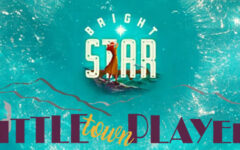 From October 1, 2010 through to the end of September 2011, we will, each day, celebrate the life of Bill Monroe by sharing information about him and those people who are associated with his life and music career. This information will include births and deaths; recording sessions; single, LP and CD release dates; and other interesting tidbits. Richard F. Thompson is responsible for the research and compilation of this information. We invite readers to share any tidbits, photos or memories you would like us to include.
From October 1, 2010 through to the end of September 2011, we will, each day, celebrate the life of Bill Monroe by sharing information about him and those people who are associated with his life and music career. This information will include births and deaths; recording sessions; single, LP and CD release dates; and other interesting tidbits. Richard F. Thompson is responsible for the research and compilation of this information. We invite readers to share any tidbits, photos or memories you would like us to include.
- November 9, 1895 George Dewey Hay born Attica, Fountain County, Indiana. Hay, also known as “the solemn old judge”, was manager of the Grand Ole Opry and director at WSM, Nashville, when he recruited Bill Monroe and the Blue Grass Boys to the Grand Ole Opry cast in October 1939. He was one of America’s pioneer radio showmen. *
- November 9, 1942 Richard Greene born in Los Angeles, California. Greene worked for Bill Monroe for about a year from February 1966, when he took over the fiddle role from Gene Lowinger, through to March 1967, during which time he was involved in the recording of the LP, Blue Grass Time (Decca DL 4896), during what amounted to five studio sessions. **
- November 9, 1961 Recording session – During an afternoon session at Bradley Film & Recording Studio Bill Monroe assisted by Jimmy Maynard [guitar], Curtis McPeake [banjo], Bessie Lee Mauldin [bass], and Vassar Clements and Buddy Spicher [both playing fiddle] recorded three songs; the Grayson and Whitter number Little Maggie and re-makes of I’m Going Back To Old Kentucky and Toy Heart, both previously recorded with Lester Flatt.
- November 9, 1967 Recording session – Bill Monroe recorded Is the Blue Moon Still Shining?, Train 45 (Heading South) and Kentucky Mandolin. Assisting Monroe during the session at the Columbia Recording Studio were Roland White [guitar], Vic Jordan [banjo], James Monroe [bass], Benny Williams and Vassar Clements [both playing fiddle]. ***
 * An American radio personality, Hay was the founder of the original Grand Ole Opry radio programme, the WSM Barn Dance, which began in 1925. Two years later “The Solemn Old Judge” (he was neither solemn nor old), as Hay billed himself, announced, “For the past hour, we have been listening to music taken largely from Grand Opera. From now on we will present the Grand Ole Opry.” That name became synonymous with country music world wide and continues in use today.
* An American radio personality, Hay was the founder of the original Grand Ole Opry radio programme, the WSM Barn Dance, which began in 1925. Two years later “The Solemn Old Judge” (he was neither solemn nor old), as Hay billed himself, announced, “For the past hour, we have been listening to music taken largely from Grand Opera. From now on we will present the Grand Ole Opry.” That name became synonymous with country music world wide and continues in use today.
As well as developing the persona of a judge, Hay is noted for his blowing a steamboat whistle during every on air appearance.
A remarkable visionary and colorful romantic who played a vital role in the commercializing and promotion of country music, Hay was inducted into the Country Music hall of Fame in 1966.
 ** Greene joined the band early in 1966 and played with Monroe for about a year, including the band’s first overseas tour, that to England in the summer of 1966.
** Greene joined the band early in 1966 and played with Monroe for about a year, including the band’s first overseas tour, that to England in the summer of 1966.
While he is featured on two Decca albums, it was through live performances that the line-up of the time – which included Peter Rowan, Lamar Grier and James Monroe – made its biggest impact.
His wild fiddling led Monroe to comment, “Richard is adding a lot to bluegrass. It’s hard to keep him from adding too much”.
 As well as being a Blue Grass Boy, Greene has been a leader of a few other significant bands, such as Seatrain, the Great American Music Band, Muleskinner, The Grass Is Greener band and The Greene String Quartet.
As well as being a Blue Grass Boy, Greene has been a leader of a few other significant bands, such as Seatrain, the Great American Music Band, Muleskinner, The Grass Is Greener band and The Greene String Quartet.
He frequently performs his original compositions for bluegrass violin and orchestra with a variety of ensembles throughout the country, including his piece entitled What If Mozart Played With Bill Monroe?
*** Melissa Monroe’s Is the Blue Moon Still Shining? (an answer song to Blue Moon of Kentucky) and Train 45 (Heading South) were paired on a single (Decca 32245) released on January 1, 1968.







